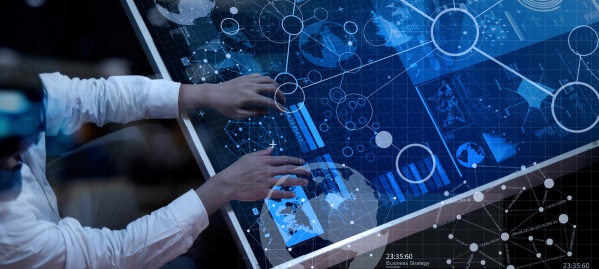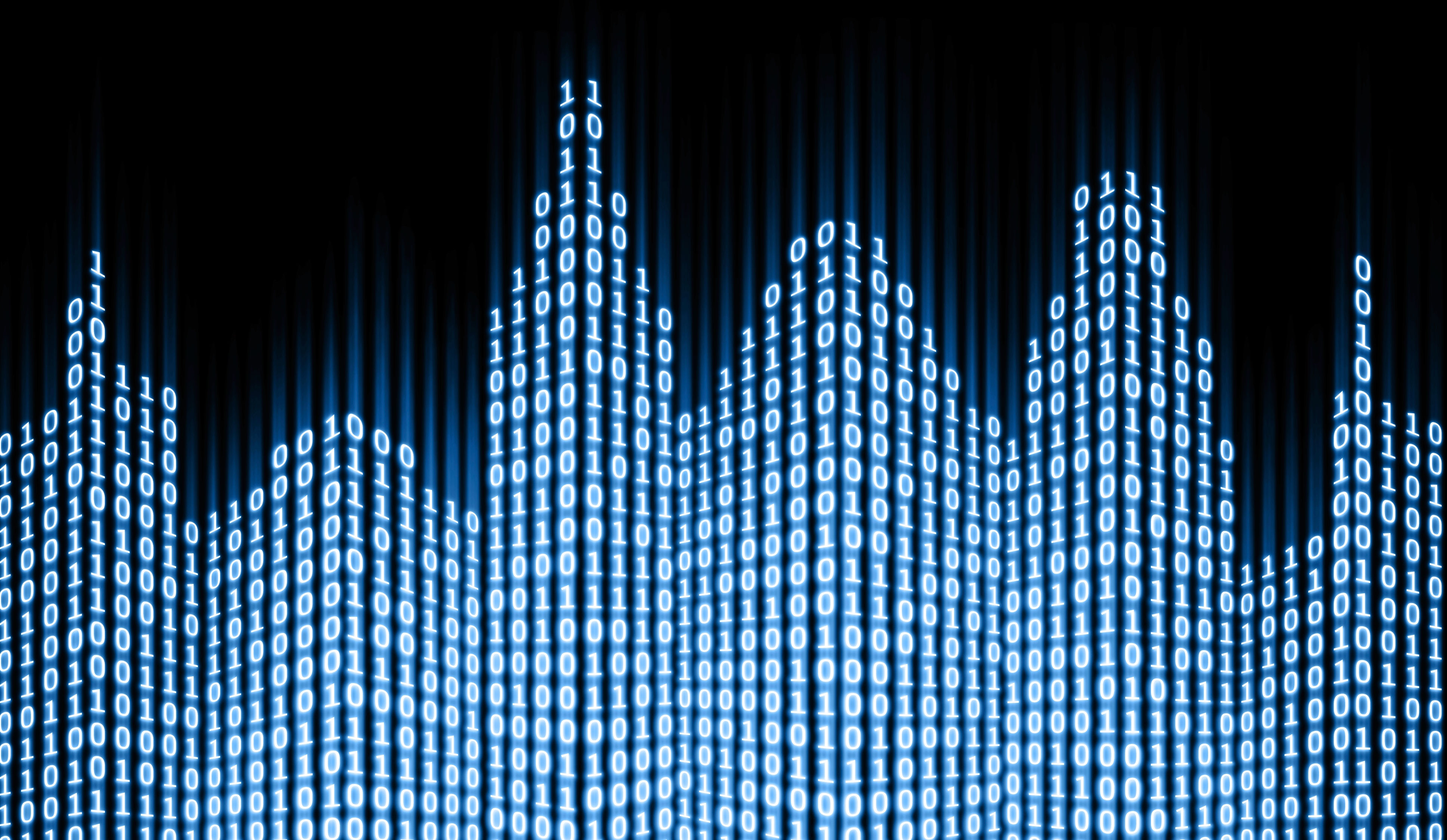
NelsonHall recently attended Atos’ Technology Day in Paris, where we heard updates on its digital technology initiatives, including key partnerships with Siemens and Google, and new AI product developments.
Extending partnership with Siemens
Atos gave an update on its ongoing investment with Siemens, a seven-year-old partnership that was recently extended to 2020 with the addition of an extra €100m in funding (pushing the total amount of funding to €330m). The partnership focuses on data analytics and AI, IoT and connectivity services using the MindSphere platform, cybersecurity, and digital services.
Also, we were encouraged by what appeared to be a renewed interest in integrating the platform by Siemens, with Siemens now partnering with Infosys to develop applications and services for MindSphere. Developing the MindSphere platform and growing the business beyond Siemens will be a critical factor for growth in Atos’ IoT business.
Google partnership update
Atos presented on its partnership with Google, announced in April 2018, framing the partnership around AI. Within the partnership scope, Atos’ initiatives are to:
- Develop its Canopy Orchestrated Hybrid Cloud to integrate Google Cloud platform (which will become Atos’ preferred cloud computing choice)
- Create a ML practice using Google Cloud’s ML APIs, and develop vertical-specific algorithms
- Use G Suite as part of its Digital Workplace offerings.
The first Atos/Google co-lab has now been opened, with two more set to follow: in Boulogne, Paris (opening in fall 2018) and Dallas, TX. Each of these labs have 50 specialists, 25 from Atos, 25 from Google.
AI product developments
Atos announced the release of its Codex AI product suite. The suite aims to act as a workbench for client development on AI and the management of AI applications. The advantage of Atos’ suite is its ability to push and manage the AI algorithms across a number of architectures in an infrastructure-agnostic manner, which we found particularly interesting with regard to edge computing.
Edge computing has a multitude of applications for IoT services. Even now the amount of data sent by IoT devices can strain the ability to communicate data back for analytic model development, and in some cases data just cannot be communicated in a timely manner. Edge computing aims to reduce the amount of data that needs to be sent ‘home’ by providing some computing power for running algorithms at the device end. Linking back to the Codex AI suite, a key selling point of the edge computing box will be the ability to have models developed at HPC stacks, then use algorithms developed on the suite to be run at the edge.
Other future-looking announcements included the release of an updated version of Atos’ Quantum Learning Machine (QLM) and a prototype of hardware for an edge computing box.
Comparing these announcements to 2016’s ‘2019’ ambition plan, it's clear to see Atos has the potential to overperform on Codex expectations. The Codex business, which encompasses business-driven analytics, IoT services, and solutions including MindSphere and now the Codex AI suite, had a revenue target of €1bn by 2019, up from ~€500m in 2016. Codex experienced very significant growth in 2017, delivering revenues of ~€760m, in part due to its acquisition of zData in the U.S. We expect to see further acquisitions in the Codex business, as projects from MindSphere and the releases announced at this event ramp up.
In sum, the strengthening of key partnerships, AI product developments, and the slow build of the Quantum business, establish a foundation for the long-term growth of Atos’ digital and data-orientated business.
]]>
Mike Smart with a quick report from DXC's 'Delivering on Digital 2018' client event.
]]>
NelsonHall estimates the Smart Energy IoT outsourcing market to be worth ~$260m in 2016, sitting third behind the Connected Car and Smart Manufacturing IoT markets. Smart Energy is of major importance, with government policy around the world strongly influencing its widespread adoption, and here I take a brief look at the background of the Smart Energy IoT market, and at some of the work currently being carried out by outsourcing vendors in this space.
The emergence of Smart Energy IoT
Energy generation is underpinned by relatively large and isolated fuel burning power plants (around 60% through the burning of natural gas and coal). However, through the use of the Internet of Things (IoT) and other related technologies this will be replaced by distributed grids.
These distributed grids enable a more flexible network topology, with distributed energy generation relying heavily on the use of renewable energy sources such as solar. These smaller energy generators can be used to form microgrids rather than relying on a costly nationwide grid to transmit the entire energy load large distances from source to distribution end point. IoT is used to monitor the performance of each individual source, e.g. down to the level of each individual solar panel.
As well as being used at the source, IoT is being used heavily at the end point, and in particular for smart meters. Smart meters can send usage readings to the utility provider at much greater frequency than traditional meters, which in turn gives the utility better forecasting of power consumption needs and the ability to perform remote management.
The early stages of these smart grids are already in progress. Government initiatives are helping the spread of smart meters, in particular in China, where current estimates show that by 2017, 95% of households will have a smart meter installed. And a 2012 EU Energy Directive has the target that by 2020 smart meters will be rolled out to 80% of EU households.
Smart Energy IoT outsourcing initiatives
IT outsourcing vendors are working on a variety of Smart Energy IoT initiatives, including:
- Atos’ work with ERDF to build an automated meter management system
- Capgemini supporting BC Hydro to implement a smart meter program
- Capgemini, with its SES platform to provide end-to-end smart metering services, currently in use by E. ON Elnät in Sweden and BC Hydro
- CGI, supported by Telefonica, providing smart meter rollout and the building of the U.K.’s smart metering shared infrastructure for utility services
- Dell’s use of Dell Edge Gateways to build a reliable IoT solution for microgrids for ELM
- HCL using predictive analytics for an oil and gas client to reduce the number of failures and the required time to fix hardware
- IBM working with a North American energy company to develop smart grid and meter technology which allowed consumers to save ~15% on normal energy usage
- TCS including pipeline monitoring with image analytics
- Tech Mahindra developing an IoT gateway and cloud portal to monitor PV farms for an EU solar equipment manufacturer
- VirtusaPolaris testing the uses of IoT for smart water utility management as part of a mini-smart city with the International Institute of Information Technology, Bangalore
- Wipro’s work with a U.S. smart meter manufacturer at Wipro’s smart energy lab.
Outlook
With current utilities aging badly and lacking the investment that would enable them to cope with increasing demand loads and move towards distributed energy generation from renewables, the need to cut down on leakage, maximize production capability and capacity, and make the most of energy sources will become ever more important. And in turn, the use of IoT in the Smart Energy sector will become increasingly important in the coming years. NelsonHall forecasts the Smart Energy IoT outsourcing market to grow from its 2016 level of ~$260m to approaching $1bn by 2020.
]]>
Smart Cities is one of the fastest growing segments within the burgeoning internet of things (IoT) outsourcing market. Currently worth just ~$140m, NelsonHall forecasts the global market for Smart Cities IoT outsourcing to grow by 75% CAGR over the next five years, taking it to ~$2.15bn by 2020.
IoT is being applied in commercial buildings and homes, and in urban infrastructures such as utilities and traffic management. IoT integrated into urban infrastructures will enable cities to gather, store and share data about how citizens interact with the city, with the aim of increasing efficiency through better control of the environment. This can take many forms: for example, in the case of Smart Streets, IoT can be used to monitor vehicles, gathering data such as speed, direction, license details, and number of passengers. Using cognitive computing and big data analysis, traffic flow can be improved and streets can be made safer and be better designed.
When combined with the use of connected vehicles, the entire road network can be transformed. Research conducted by MIT’s Senseable City Lab looked at the use of intelligent slot-based road intersections which automatically adjust vehicle speeds to coordinate arrivals at intersections and remove the need to stop and wait at traffic lights. While this reduces average journey time per car, secondary benefits include reduced pollution and less vehicle wear and tear.
Similar thinking can be applied to other city infrastructures such as sewage and water treatment, parking, and street lighting.
In buildings, efficiencies can be made by better understanding energy usage within the building and relaying this information to building control systems. In one case, TCS implemented an IoT-based solution into large industrial cooling units for an Indian building owner. By monitoring the coolers’ flow rates, inlet and output temperatures, and equipment status (in addition to temperature throughout the building and the local weather conditions) TCS was able to achieve energy savings of around 4%, in addition to reducing the chiller downtime by 10%. TCS has enabled the solution to be reusable and to work for building heaters as well as coolers.
Additionally, safety and standard of living can benefit from IoT through the use of connected smoke alarms, door locks, and smart lighting, windows and blinds.
While the consumer market has been relatively slow to integrate these technologies into buildings, the commercial market is growing faster, with capital investment in the integration of IoT solutions into existing building management systems starting to deliver returns.
Inhibitors to applying IoT much more widely across cities include the difficulty of coordinating across government agencies, and the constraints of outdated regulations. Hence, extensive Smart City development is for now limited to specific, focused initiatives such as:
- India’s Smart City Mission project to build 100 smart cities
- Dubai 2021, a smart city strategy including over 100 initiatives and a plan to transform 1,000 government services into smart services
- Barcelona’s smart metropolis strategy
- Australia’s Commonwealth Smart Cities Plan.
IT outsourcing vendors active in the Smart Cities space include:
- Accenture – working with Chicago CityWorks and Seattle for smart buildings
- CSS Corp – working to improve airport efficiencies and thermostats in retail buildings
- IBM – with its Smarter Cities challenge
- Dell – working with Fujian Province, China and an unnamed hotel to improve boiler efficiencies
- NIIT Technologies – working with an insurance provider to discover what electricals are in use in buildings
- PTC – working with All Traffic Solutions for connected traffic safety equipment
- Tech Mahindra – working on smart cities in Dubai, Milton Keynes (England), and a number of Indian cities
- TCS – providing building chiller/heater management and airport customer tracking
- Virtusa – working with an airport for customer tracking.
Smart City initiatives are emerging fast, and the related IoT outsourcing market is growing alongside. After E-Healthcare and Smart Retail, Smart Cities is the third fastest growing area of IoT adoption globally.
]]>IoT can be used to build connected vehicle systems to enable:
- Vehicle-to-vehicle communication so that vehicles can update each other on road conditions, allow vehicles to properly maintain safe distances, etc.
- Vehicle-to-OEM communication so that vehicle manufacturers can build stronger relations with drivers. Using data on the use of a vehicle, the manufacturer can perform remote diagnostics and predictive and preventative maintenance
- Vehicle-to-third party communication facilitating new business models; e.g. telematics for car insurance, smart parking, navigation systems, entertainment streaming services, smart fueling stations
- Vehicle-to-infrastructure communication connections to traffic lights, toll stations, dynamic speed limits.
The use of these systems will change how vehicles are bought/sold, managed, driven and maintained, with the primary aims of increasing safety, added revenue for OEMs, a better driver experience, and efficiencies for third parties.
The consumer IoT market for connected car systems can be subdivided into categories including driver assistance, safety, and in-car entertainment. Currently the largest segment of the connected car market is dedicated to increasing the safety of motoring, either through the use of telematics systems or for accident reporting.
An easy entry point into the market is in the development of driver scores through the use of telematics. For a relatively small investment, black boxes can be installed to measure acceleration, speed, position, and cornering. Vendors can use ADM capabilities to develop driver scores which can be used by insurance providers or for fleet tracking. The majority of vendors operating in the IoT space have some form of telematics or fleet management offering, including relatively new entrants such as NIIT Technologies.
While the use of telematics, predictive maintenance, and fleet management may currently be the largest application of IoT, the biggest opportunities are in building driver assistance and in-vehicle entertainment. In the self-driving space, fully self-driving vehicles have the chance to change multiple industries dramatically in years to come. If vendors can support manufacturers in developing near 100% reliable onboard real-time analytics (provided that regulation supports their use), the potential market for the autonomous vehicle is enormous. Apart from consulting and systems integration of these systems, the building of connected applications that require real-time analytics, and platforms and infrastructure to support the influx of data is a huge opportunity. The obvious caveat to this market becoming established is the issue of security, following recent revelations of system vulnerabilities enabling attackers to take control of a vehicle’s acceleration and braking, for example.
However, on the assumption that before long the self-driving vehicle market will take off, vendors have been working with vehicle OEMs and banks to extend the use of in-car entertainment systems – e.g. to provide shopping facilities. From a car’s infotainment system, passengers will be able to secure tickets to an event, or pay for a drive-through, automatically using beacon technology. Vendors working in this space include:
- Atos’ work with Renault to use Renault’s R-Link tablet for in-car shopping
- Accenture’s PoC with Visa for ordering fast food (pizzas).
In the wider connected vehicle space, vendors are primarily supporting clients in maintaining transport infrastructure and providing asset management. Examples of this include:
- Capgemini’s Linear Asset Decision Support solution used by National Rail that uses data from a number of sensors, including carriages fitted with rail fault detectors for preventative maintenance
- CGI supporting ProRail by developing the Train Observation and Tracking System (TROTS).
The connected vehicle space has had some of the largest adoption rates of IoT, mainly due to the easily demonstrable benefits to end-clients and third parties, and the numerous potential applications. NelsonHall estimates that the connected vehicle IoT market is currently worth $250m and forecasts 43% growth (CAGR) over the next five years, taking it to $1.5bn by 2020.
A major market analysis report on IoT will be published very soon as part of NelsonHall's IT Services program. To find out more, contact Guy Saunders.
]]>